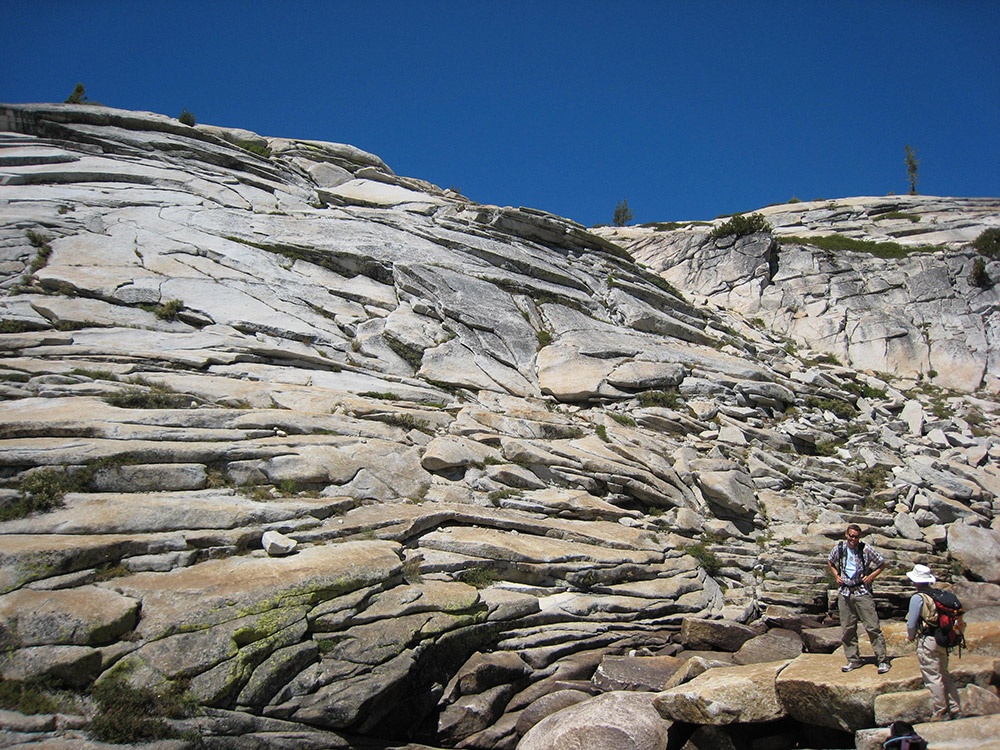New research uses surface features to predict weathering of rocks beneath
 Rock fractures in Yosemite National Park, California. Image courtesy of UH/SOEST.
Rock fractures in Yosemite National Park, California. Image courtesy of UH/SOEST.Just below Earth’s surface, beneath the roots and soil, is a hard, dense layer of bedrock that is the foundation for all life on land. Cracks and fissures within the bedrock provide pathways for air and water, which chemically react to break up rock, ultimately creating soil — an essential ingredient for all terrestrial organisms. This weathering of bedrock is fundamental to life on Earth.
Accurate predictions of where open fractures are beneath the surface are valuable for additional reasons. Fractures in the bedrock affect where drinking water will flow; the paths that magma takes as it moves to the surface in volcanic eruptions; the strength of rock masses on slopes; and how severe shaking will be during earthquakes.
Now scientists at UH Mānoa, Massachusetts Institute of Technology (MIT), University of Wyoming and elsewhere have found a way to predict the extent of bedrock weathering, given a location’s topography – the shape and features on the surface. The results are published in the journal Science. Steve Martel, professor of Geology and Geophysics (G&G), and the team developed a stress model that estimated the thickness of this critical zone, given the forces generated by topography, gravity and plate tectonics.
Read more about it in the UH System News or Hawaii Public Radio.



